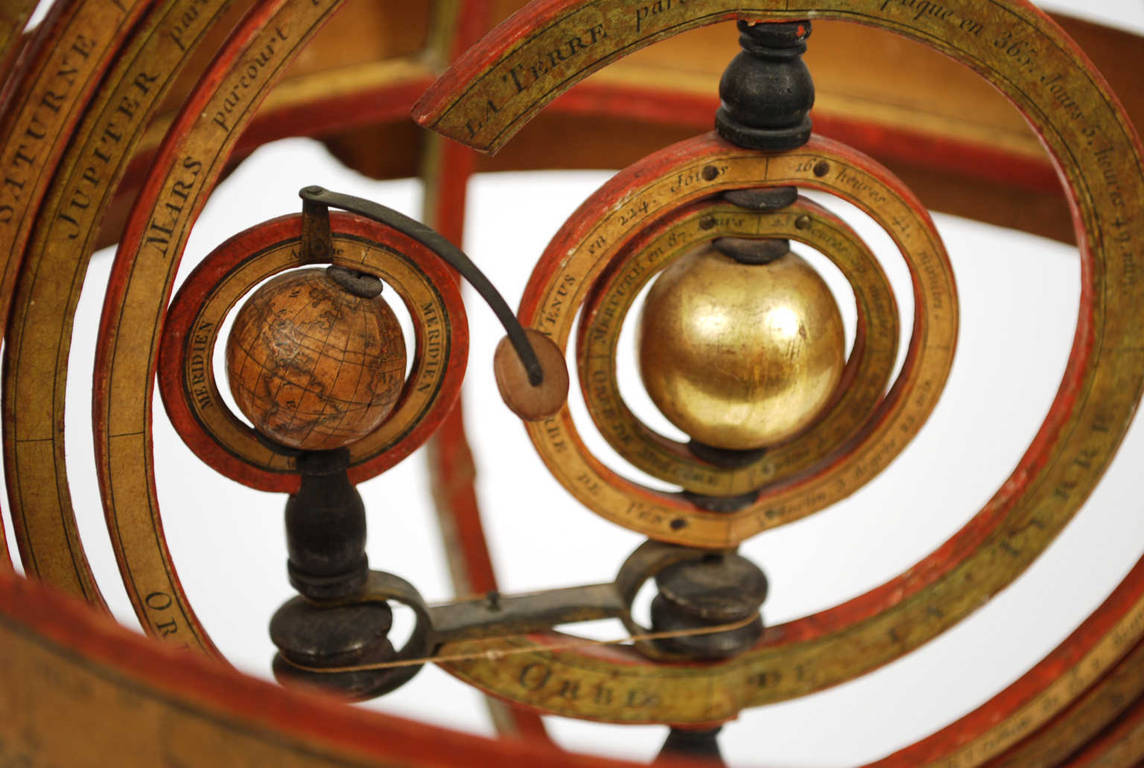antik.it/Nautical-antiques/8155-Antique-Sextant/
Code 8155
EUR 2000.00
In stock
1748363409Code 8155 Antique SextantBrass sextant signed B. Cooke & Son Hull, from the second half of the 19th century and housed in its original mahogany box with brass handle, hinges and locking hooks, complete with lock and key. Silver flap and vernier, ebony handle, 3 colored glasses for the fixed mirror and 4 for the movable one, four telescopes including a long one, 1 filter, 1 key for registration, vernier graduated from 0 to 150°, index and horizon mirror. Condition: very good, working and complete with custom-made wooden and brass base for support. A paper label inside the box indicates the name of John Bliss, a nautical instrument repairer in New York.
Box dimensions cm 25.5x23. 5x12. 5 – inches 10x9. 2x4. 8.
Barnard Cooke founded his company around 1863, after having worked from 1841 to 1853 with his brother Thomas Cooke, a famous telescope and clock maker. B. Cooke & Son boasts a glorious history as a manufacturer and distributor of nautical instruments.
The sextant is an ancient astronomical instrument used to measure the height of a star (for example the Sun): the instrument is placed on a vertical plane and, looking through the aiming device, the horizon line visible through the non-silvered half of the fixed mirror is sighted. By moving the alidade, with which the mirror is integral, the light rays coming from the star and subsequently reflected by the moving mirror and the silvered half of the fixed mirror are sent back by the latter in the direction of observation: if you look through the aiming device you see the image of the star, obtained by double reflection, coincide with the horizon line. The height of the star is expressed by the angle whose value is read on the graduated scale. The filter is used when the star to be sighted is the Sun.
Sir Isaac Newton invented the principle of double reflection in navigation instruments, but his research was never published. Two men later, independently of each other, discovered the sextant around 1730: John Hadley (1682-1744), an English mathematician, and Thomas Godfrey, (1704-1749), an American inventor. But it was not until 1758 that Admiral John Campbell carried out a series of trials on the open sea to test a new method that relied on the lunar distance as a means of calculating longitude. This was how the sextant was developed. Initially made of brass, they had scales that were divided with great precision by mathematicians who made scientific instruments.
FAQ
Do you provide an authenticity certificate/expertise?
Of course! The legislative decree n. 42/2004 stipulates that who sells works of art or historical and archaeological items has the obligation to deliver to the purchaser the documents attesting to the authenticity of the object, or at least to submit the documents relating to the probable attribution and origin. Antik Arte & Scienza provides an expertise (as warranty) that contains a description, period and assignment or the author, if known, of the item.
How can I pay?
Secure payments by PayPal, credit card or bank transfer.
What are the shipping terms and the delivery schedule?
Shipping by DHL or UPS is free (but if we are shipping to a country non-EU remember that any taxes and customs duties are on your expense), and items will be sent just after receiving of payment.
Italy: delivering on the average in 24 h.
Europe: delivering on the average in 2/3 weekdays.
Other countries: delivering on the average in 5 weekdays; custom duties charged to the buyer.
Is shipping insured?
Of course! Free insurance by Lloyd's London that covers almost all destinations.
If I change my mind, can I return the item?
Of course! (see our general terms for more information).
e-Shop
Nautical antiques
Code 8155 Antique Sextant
Antik Arte & Scienza sas di Daniela Giorgi - via S. Giovanni sul Muro 10 20121 Milan (MI) Italy - +39 0286461448 - info@antik.it - www.antik.it - Monday-Saturday: 10am-7pm





























